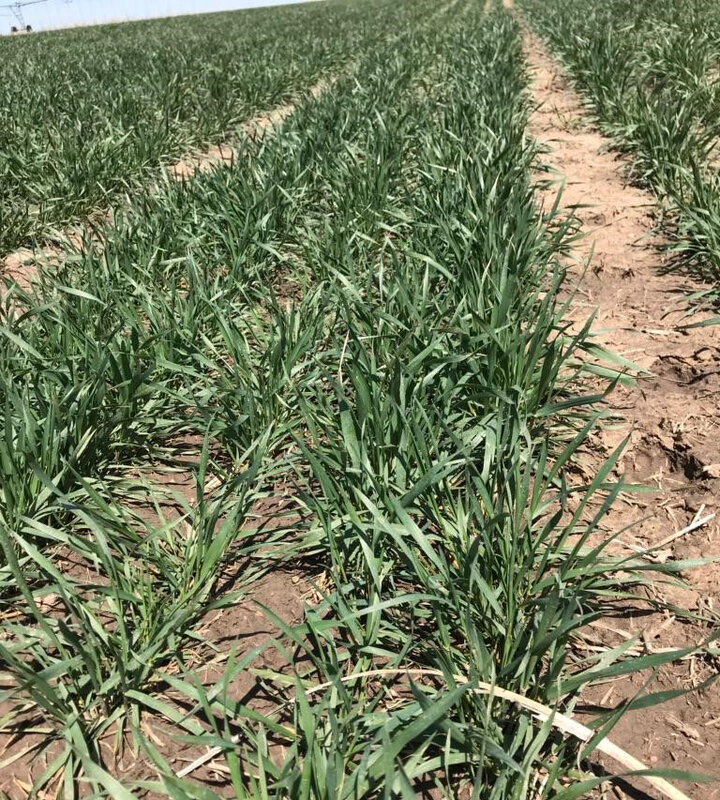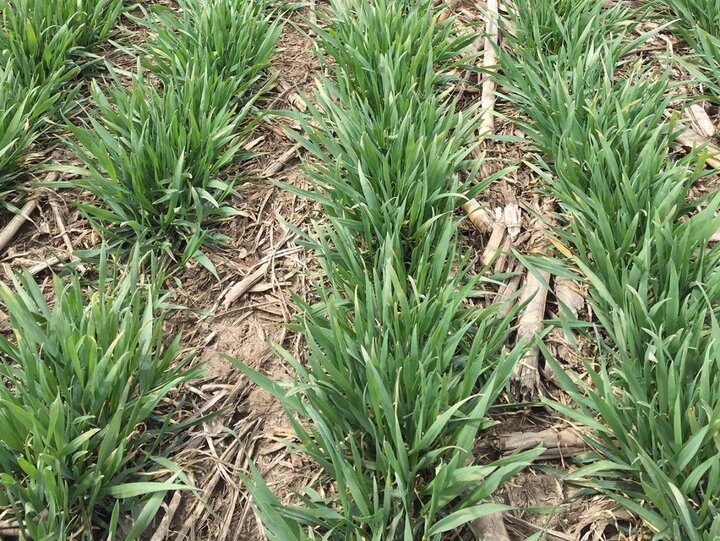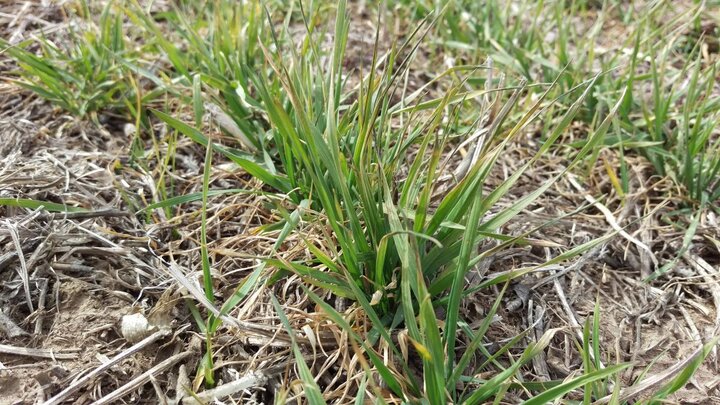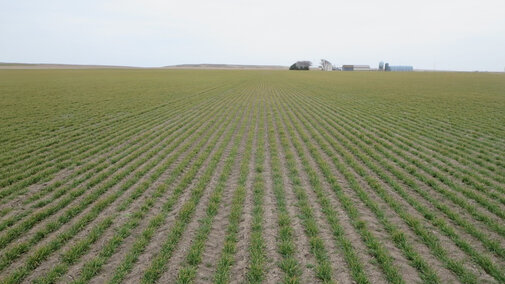In the Panhandle
Cody Creech, Dryland Cropping Systems Specialist
Winter wheat in the Nebraska Panhandle continues to be rated above average with most of the wheat rated good to excellent. Favorable weather in the fall helped growers to seed wheat into good moisture in a timely manner. As wheat entered winter, the wheat was well established having put on a number of tillers.
The northern Panhandle has received more winter moisture than the southern Panhandle. Until recently, much of Cheyenne County was rated as abnormally dry on the Nebraska Drought Monitor map. Spring snow and rain has alleviated that deficiency and improved wheat conditions in the area.
Wheat in the Panhandle is currently at Feekes 3-4 and no wheat has been reported as jointed. This is about two weeks behind normally expected growth for this time of year. One of the implications of this delayed growth is that the competitive ability of the wheat to suppress weeds has been reduced. Some fields that normally would not have been sprayed for weeds should be scouted to ensure no herbicide application is warranted. Many growers are spraying weeds now that the weather has improved.
Overall, wheat in the area overwintered very well. It is the perfect opportunity to get nitrogen and herbicides applied to the wheat to get it off to the best start.



In Southwest and West Central Nebraska
Robert Klein, Western Nebraska Crops Specialist

Most winter wheat in this area of the state is in fair to good condition. A good number of acres were seeded late because of the rains that occurred during the suggested seeding dates. Many of the fields that were seeded late have thinner stands and are as much as two weeks behind average growth stage. The late-seeded winter wheat did not get a lot of growth last fall but did not suffer any winter injury. The wheat seeded before the rains is about one week behind normal growth stage.
Spring applications of nitrogen have been made to most fields where spring fertilizer applications were planned. With the cool weather the summer annual weeds are just starting to appear and herbicide treatments will be applied in the near future. Be careful in selecting herbicides so they do not prevent the following crops or cover crops that are planned.
Some fields have winter annual grass weeds, the most difficult to control in winter wheat. They are best controlled with crop rotation. If treatments are necessary, fall applications perform better than spring applications. See the Nebraska Extension Guide for Weed, Disease and Insect Management in Nebraska (EC 130) for more information. NebGuides are also available on the subject at http://extensionpubs.unl.edu/


In Eastern Nebraska
Nathan Mueller, Extension Educator; Jenny Rees, Extension Educator; Randy Pryor, Extension Educator


A very wet period from late September through mid-October delayed the start of wheat planting for many portions of eastern Nebraska. Late planting coupled with record cold temperatures in April have led to a less developed wheat crop compared to normal. Some freeze injury to leaves was caused by the record cold nighttime temperatures, but the delayed maturity (in the tillering stage) mitigated any significant yield losses from the freeze unlike what is being experienced in Kansas and Oklahoma. Currently, winter wheat growth stages range from early tillering (Feekes 2) to late tillering (Feekes 5). The plant population in some fields has been less than ideal due to conditions last fall, with only 15 plants per square foot or 650,000 plants per acre. However, many growers did top-dress nitrogen earlier this spring to encourage spring tillering. Based on field observations this month, wheat is tillering well.
Foliar diseases have not become an issue in eastern Nebraska yet. To our south, Oklahoma and Kansas are experiencing very little leaf and stripe rust pressure due to the drought, which bodes well for us. The southern two tiers of counties, where most of the winter wheat acres are planted in eastern Nebraska, are abnormally dry or under moderate drought conditions. There is sufficient topsoil moisture in these areas, but there is very little subsoil moisture in the 2nd, 3rd, and 4th foot. Due to the dryness in Nuckolls, Thayer, Saline, and Jefferson counties, some growers are considering transitioning a winter wheat cover crop to a cash crop while other are considering grazing wheat to supplement pastures.
In any case, as a result of delayed maturity in the wheat crop, it is very likely that the period from flowering through maturity will occur later than normal. What weather conditions later this season could help us out? Regional weather analysis for the eastern hard red winter wheat growing region have shown that the yield potential after flowering is improved by cooler mean temperatures, increased solar radiation, higher evapotranspiration (i.e., hope for a cool, dry, and sunny June), and having good soil moisture prior to flowering.
Also see this week's USDA crop condition and progress report for Nebraska.

